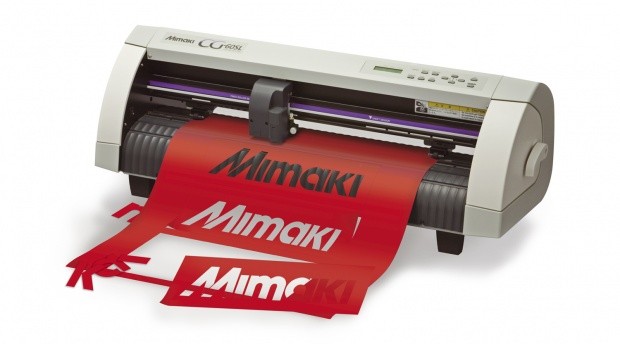With all the discussion about wide-format print and its associated software, it is often easy to forget the role of vinyl cutters in today's display industry. Remembering this particular technology back in the 80s, the availability of PCs saw the inevitable rush of computerised production software coming on line for the first time. These were the days long before anyone considered producing full-colour print generated by a desktop device yet, even now, cutting capabilities remain very much the bread-and-butter equipment of the sign-making sector and still deserve recognition for many of the jobs we see today.
Nowadays, driving every sign-making cutter is a piece of software. Vastly simplified, thanks either to Windows or to the Macintosh OS, these packages are a far cry from those of less than 30 years ago. As such, we tend to overlook their importance and relevance and the fact that they, too, have advanced with the help of improved technology. Many of today's cutting plotters are shipped with a program to enable users to get up and running quickly and easily but, for those wanting greater numbers of features and additional options, there are also specialist packages available.

Vinyl cutters need good software, too
Sign-making software can be deemed extremely simple to use as it employs a relatively straightforward code which doesn't need to involve itself in the complexities found in RIPs and workflow programs. Because it is vector based, it requires a plotter language, such as HPGL, to give the vinyl cutter the instructions needed. As this technology has evolved largely from pen plotters, some of the parameters have remained but refinements have been necessary to allow for varied cutting pressure and depth, the ability to produce clean corners and smooth curves, and for the finished vinyl to be easy to weed.
Because today so many sign-makers are familiar with CorelDraw and Adobe Illustrator, dedicated cutting software options are available to take designs that have been created in a third-party program and generate the additional control options to make the cutting plotter work to its optimum capability. While the process itself might seem fairly straightforward, there are time-saving features which are specific to the technique, such as automatic vectorisation of images and graphics into the outline format needed. Likewise, users can produce special effects such as shadows, outlines and other types of decoration.
Today's software options include far more than the ability to drive a vinyl cutter and users tend to get what they pay for with extra features. The dedicated programs available can be grouped roughly into three categories, according to functionality, and start with bundled, shareware and free plug-ins. Mid-range packages often build on the basic elements by adding more versatile capabilities, font libraries and templates, while those at the high end are designed for optimum productivity. Typically these include the ability to generate weed borders and facilitate complex tiling, as well as including options for logo design, plus libraries containing design options such as pinstripes and borders.
Other additions which have been added to basic vinyl cutting as the years have passed might seem familiar to those working with print-to-cut workflows. Examples include options for nesting, resizing and scaling and the ability to place multiple signs within a given area to minimise waste material. Text tools have also improved vastly and, these days, often incorporate the ability to add faux bold and italic options to fonts, add effects to lettering, and simplify the production of sequential numbering.
The relationship between cutting software and colour production programs is necessarily a close one in view of the popularity of both print-and-cut integrated production systems and solutions which involve printing equipment and third-party roll-fed and flat-bed cutters. For example, Mimaki's FineCut software is cross-platform and is a plug-in for both CorelDraw and Adobe Illustrator so that it brings essential sign-making requirements into the realm often more associated with full-colour production. It provides useful integration with Mimaki's RasterLink Pro RIP software for extra functionality. Likewise, Roland DG's CutStudio is also available as a plug-in with the emphasis on being able to create designs in one of the popular graphics packages and output the finished results without having to worry about complicated export parameters.
Sign-making software has worked as a good precursor for people going onto the greater complexities of RIPs and print-to-cut workflows. Today's cutting plotters now exercise speed and intricacy we could only have dreamed of in the early days of computerisation, and much of their talents are down to the efficient development of the packages used to drive them.